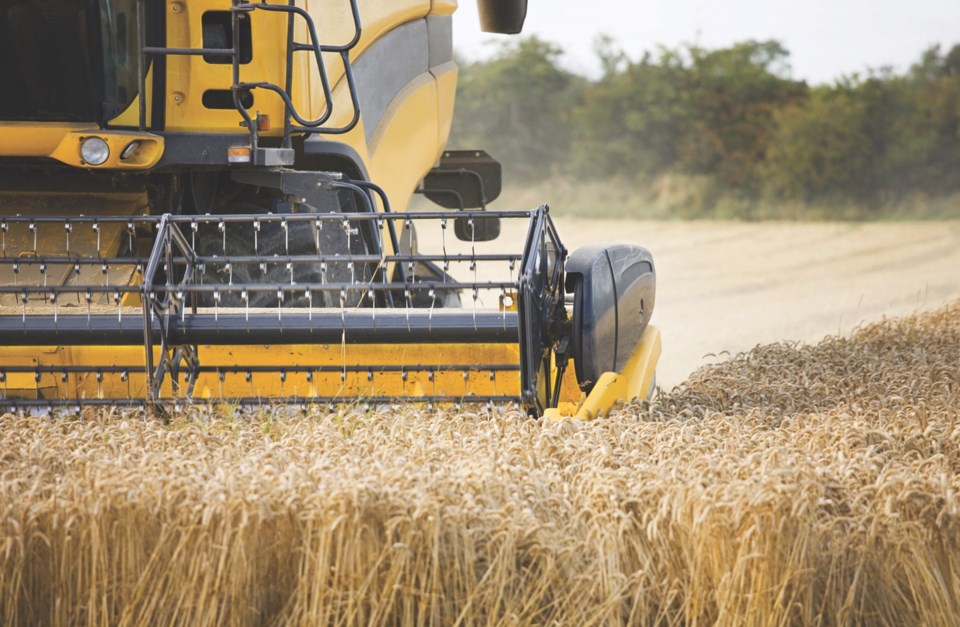Drought has been a big issue for parts of the province, but that is not the only weather peril that producers have faced this year.
Jesse Cole, manager of insurance products and product innovation at Agriculture Financial Services Corporation said this has been an “interesting” year for producers in Alberta.
“I don't know if we've ever seen anything this variable, we've had flood and fire and drought we were worried about grasshoppers at one point. It's been a lot of stuff going on this year in terms of weather perils, but the drought I think in certain areas in the province is a big story this year,” he said.
Province-wide the soil moisture conditions were quite low this spring, a one in 50 year low, said Cole.
“Everybody seeded into dust,” he said.
The lack of moisture is a multi-year issue. There was a nearly province-wide drought in 2021, that saw huge payouts to producers from insurance, and Cole described 2022 as being “spotty.”
“Some (producers) had okay years, but you know, there are areas where they're now in the third year of drought. That's not good,” he said.
Cole isn’t anticipating insurance payouts to be as large as they were in 2021, but “southern and eastern Alberta, are facing a year that's equivalent to 2021 and maybe even worse.”
Livestock producers were some of the hardest hit in the province, said Cole because pasture crops like hay depend on spring moisture which they did not get.
“The first cut of hay was quite variable and not that good. There is a bit of a feed deficit right now for the livestock folks and our moisture deficiency insurance product for pasture paid out like gangbusters.
“Like we're already we're over that kind of $250 million mark in that product,” said Cole.
The year started off with an “abnormally high” amount of wildfire activity, particularly in the Northwest region of the province.
“Wildfires usually don't intersect with cropland too much. But it'll come out of the trees on people in edge areas and go through fields. It'll jump a riverbank and go through fields as well.
“We had a few claims there, more than normal, but it's not a huge number of claims in our book. It's relatively small compared to the drought situation,” he said.
Fires were followed by flooding, especially in the Hinton area, but Cole said the issue wasn’t as big as they were anticipating.
“I don't know if drought saved us from flooding or what,” he said.
There was also higher grasshopper pressure this year, which may have correlated with drought conditions.
“How much the grasshopper eats versus how much is gone because of the drought is maybe a moot point,” he said.
At the beginning of the year, there was a concern about the lack of control methods related to grasshoppers, as some of the insecticides had been deregistered and restricted. But overall, grasshopper-wise, Cole said everything turned out okay.
It wasn’t all bad news, Northwest and West Central and Northeast did get enough rain for a little bit of recovery, Cole explained.
“They got enough rain that there are reasonable crops compared to average. They're not where they were or should be in that five- or 10-year average kind of framework, but they're not so far off in a lot of areas,” he said.
Irrigated areas also did quite well.
“If you had access to irrigation water, this year was probably quite good,” he said.
Data from the crop report released Sept. 22, showed the provincial major crops yields will be 91 per cent of the five-year-average.
“I suspected those areas in southern and eastern Alberta, are going to have a lot of (insurance) claims, going to be a lot of yield loss especially on dry land. But that West Central and Northern areas, there might be some areas where they're close to the line but don't cross it. But in general, they're not doing too bad,” he said.
The fall has also been cooperative, said Cole.
“The last thing we need is a bunch of unharvested crops this year that would put the cherry on top of the cake and round out the issues,” he laughed.
As for what Cole would like to see as we head into winter for areas in South, Central, and Northeast, that are experiencing a moisture deficit might not make everyone happy.
“We'd really like to see as a good — you know, I hate to say it — but lots of snow in the wintertime would be awesome. A big snow and some spring rains would help everybody quite a bit.”



